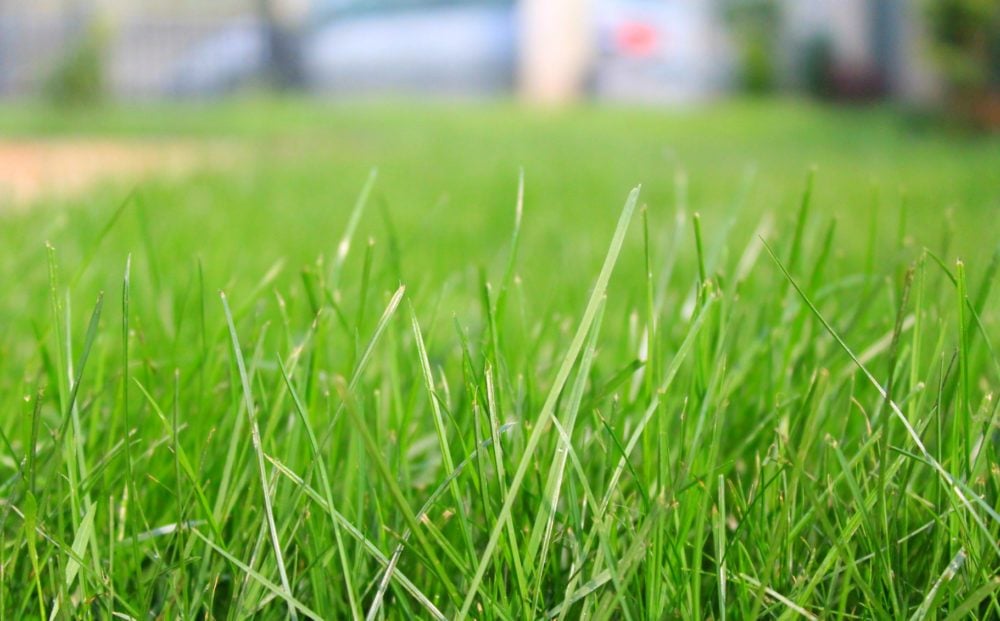Personal benefits of being a vegan
Lorem ipsum, or lipsum as it is sometimes known, is dummy text used in laying out print,
graphic or web designs.
The passage is attributed to an unknown typesetter in the 15th century who is thought to have scrambled parts of
Cicero's De Finibus Bonorum et Malorum for use in a type specimen book. It usually begins with:
“Lorem ipsum dolor sit amet, consectetur adipiscing elit, sed do eiusmod tempor incididunt ut labore et dolore
magna aliqua.”
The purpose of lorem ipsum is to create a natural looking block of text (sentence, paragraph, page, etc.) that
doesn't distract from the layout. A practice not without controversy, laying out pages with meaningless filler
text can be very useful when the focus is meant to be on design, not content.
The passage experienced a surge in popularity during the 1960s when Letraset used it on their dry-transfer
sheets, and again during the 90s as desktop publishers bundled the text with their software. Today it's seen all
around the web; on templates, websites, and stock designs. Use our generator to get your own, or read on for the
authoritative history of lorem ipsum.
Origins and Discovery
Lorem ipsum began as scrambled, nonsensical Latin derived from Cicero's 1st-century BC text De Finibus Bonorum
et Malorum.
Engraving of Marcus Tullius Cicero
CICERO
HEDONIST ROOTS
Until recently, the prevailing view assumed lorem ipsum was born as a nonsense text. “It's not Latin, though it
looks like it, and it actually says nothing,” Before & After magazine answered a curious reader, “Its ‘words’
loosely approximate the frequency with which letters occur in English, which is why at a glance it looks pretty
real.”
As Cicero would put it, “Um, not so fast.”
The placeholder text, beginning with the line “Lorem ipsum dolor sit amet, consectetur adipiscing elit”, looks
like Latin because in its youth, centuries ago, it was Latin.
Richard McClintock, a Latin scholar from Hampden-Sydney College, is credited with discovering the source behind
the ubiquitous filler text. In seeing a sample of lorem ipsum, his interest was piqued by consectetur—a genuine,
albeit rare, Latin word. Consulting a Latin dictionary led McClintock to a passage from De Finibus Bonorum et
Malorum (“On the Extremes of Good and Evil”), a first-century B.C. text from the Roman philosopher Cicero.
A former meat eater's experience
Lorem ipsum, or lipsum as it is sometimes known, is dummy text used in laying out print,
graphic or web designs.
The passage is attributed to an unknown typesetter in the 15th century who is thought to have scrambled parts of
Cicero's De Finibus Bonorum et Malorum for use in a type specimen book. It usually begins with:
“Lorem ipsum dolor sit amet, consectetur adipiscing elit, sed do eiusmod tempor incididunt ut labore et dolore
magna aliqua.”
The purpose of lorem ipsum is to create a natural looking block of text (sentence, paragraph, page, etc.) that
doesn't distract from the layout. A practice not without controversy, laying out pages with meaningless filler
text can be very useful when the focus is meant to be on design, not content.
The passage experienced a surge in popularity during the 1960s when Letraset used it on their dry-transfer
sheets, and again during the 90s as desktop publishers bundled the text with their software. Today it's seen all
around the web; on templates, websites, and stock designs. Use our generator to get your own, or read on for the
authoritative history of lorem ipsum.
Origins and Discovery
Lorem ipsum began as scrambled, nonsensical Latin derived from Cicero's 1st-century BC text De Finibus Bonorum
et Malorum.
Engraving of Marcus Tullius Cicero
CICERO
HEDONIST ROOTS
Until recently, the prevailing view assumed lorem ipsum was born as a nonsense text. “It's not Latin, though it
looks like it, and it actually says nothing,” Before & After magazine answered a curious reader, “Its ‘words’
loosely approximate the frequency with which letters occur in English, which is why at a glance it looks pretty
real.”
As Cicero would put it, “Um, not so fast.”
The placeholder text, beginning with the line “Lorem ipsum dolor sit amet, consectetur adipiscing elit”, looks
like Latin because in its youth, centuries ago, it was Latin.
Richard McClintock, a Latin scholar from Hampden-Sydney College, is credited with discovering the source behind
the ubiquitous filler text. In seeing a sample of lorem ipsum, his interest was piqued by consectetur—a genuine,
albeit rare, Latin word. Consulting a Latin dictionary led McClintock to a passage from De Finibus Bonorum et
Malorum (“On the Extremes of Good and Evil”), a first-century B.C. text from the Roman philosopher Cicero.
-Tejas Mukherjee
9 worthy reasons to turn vegan
Veganism combats world hunger
A lot of the food that's grown in the world isn't being eaten by humans. In fact, 70% of the grain grown in the
US feeds livestock, and, globally, 83% of farmland is set aside to raise animals.
It's estimated that 700 million tons of food that could be consumed by humans goes to livestock each year.
While meat is more calorically dense than plants, more aggregate calories (and more diverse nutrient profiles)
could be produced if that land was dedicated to various plants.

Plus, all the deforestation, overfishing and pollution caused by meat and fish industries limits the overall
capacity of the Earth to produce food.
If more farmland was used to grow crops for humans, then more people could be fed at less of an expense to the
planet.
This understanding is becoming more urgent as the global population is expected to hit or surpass 9.1 billion by
2050. There's simply not enough land on the planet to raise enough meat to feed everyone the average American
diet. Nor can Earth cope with the pollution this would cause.
It conserves water
Hundreds of millions of people around the world don't have access to clean water. Many more people struggle with
periodic water scarcity, sometimes because of drought and sometimes because of mismanagement of water sources.
Livestock guzzle more fresh water than just about anything else. They're also one of the biggest polluters of
fresh water.

The more livestock the world replaces with plants, the more water there will be to go around.
It takes 100 to 200 times more water to raise a pound of beef than it does to raise a pound of plant foods. As
my colleague Meghan recently noted, "Cutting down on just one kilo of beef saves 15,000 litres of water. And
replacing a roast chicken with a hearty veggie chili or bean stew (which has similar protein levels) saves 4,325
litres of water."
It cleans the soil
Similar to how livestock pollute water, they also erode and weaken soil. This is partly because raising
livestock usually leads to deforestation, which clears huge swaths of land of the different elements (such as
trees) that provide nutrients and resilience, to make room for the livestock to roam.
The world loses roughly the size of Panama each year to deforestation, which also accelerates climate change
(trees store carbon)
Raising a diversity of plants, instead, nourishes soil and leads to long-term resilience.

A vegan diet reduces energy consumption
Raising livestock costs a lot of energy. This is due to a wide range of factors including: it takes a long time
to raise animals; they consume a lot of food that was cultivated on land that could have been put to other use;
meat products need to be shipped and refrigerated; and meat takes a long time to process from slaughterhouse to
kitchen table.

Plant-based proteins, meanwhile, can be raised with 8 times less energy costs than meat-based proteins.
It even purifies the air
All the livestock in the world cause more air pollution than all the cars, buses, planes, ships and other modes
of transportation in the world combined.
Plants clean the air.

A vegan diet will make you more healthy
All the nutrients you need--and probably don’t get enough of--are provided by a vegan diet. Fresh vegetables,
fruits and other vegan staples are teeming with nutrients that meat just doesn’t provide.
You can get all the protein you need from peanut butter, quinoa, lentils, beans, and much, much more.
The World Health Organization just released a report further outlining the increased risks of colorectal cancer
from regular red meat and processed meat consumption. This is on top of existing concerns about heart disease,
stroke, and other health complications.
A lot of people have diets that are extraordinarily high in processed food that contain added sugar,
preservatives, chemicals, and other ingredients that can impede your health, make you feel sluggish on a daily
basis, and lead to long-term health problems. A lot of the time, meat is at the center of this diet.
Of course, vegans can have a highly processed, unhealthy diet. But going vegan forces you to actively consider
the ingredients of the foods you are consuming. This daily consideration will most likely, over time, lead to a
fresher, more nutrient-rich diet.
It’s really amazing how much better you feel when you eat healthy. Try it if you don’t believe me.

It’s delicious and not as hard as you think
The most common critique I’ve heard leveled against veganism is that it forces you to retire your taste buds and
your free time: because meat is superior in taste and is easier to make.
While taste is subjective and a lot of people “need” their chicken wings on Sunday, I’d argue that the aversion
to veganism is based more on cultural education than on actual comparisons.

Vegetables are delicious. They’re flavorful when cooked properly. Fruits are delicious. Walnuts, almonds,
cashews, peanuts: delicious. Quinoa: delicious. Nearly all the foods in a vegan diet are super delicious and
recipes are very easy to find.
It’s fun and can make you a better cook
I think everyone is guilty of some lazy cooking every now and then. And most people hit up take-out once or
twice a week after a long day at work or school.
Vegetables can be a bit intimidating. There’s so many of them. A lot of them have to be prepared just right. And
a lot of people (myself included) didn’t grow up in environments that appreciated this (my family relied on
boiling frozen vegetables).
But learning about how to access the full flavor and nutrients of a vegetable is fun and rewarding.

You’ll learn a lot about the methods of cooking when you have a counter full of vegetables in front of
you.
It’s more ethical
Come on. Animals deserve a dignified life. They’re intelligent, gentle creatures.

They shouldn’t suffer from birth to death. But that’s the life a lot of them have when born into factory farms.
Some meat producers are changing their models to adapt to public outrage over factory farms, but the vast
majority of meat you encounter in restaurants and grocery stores are produced in grim conditions.
If you even cut meat out of one or two of your meals per week, you’ll be making a dent in this grim
reality.